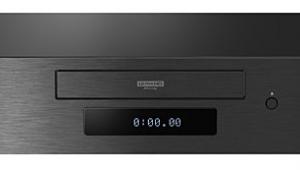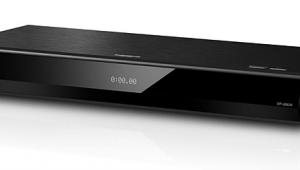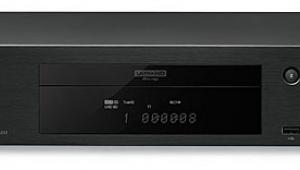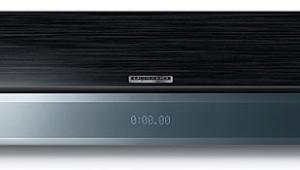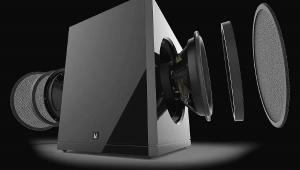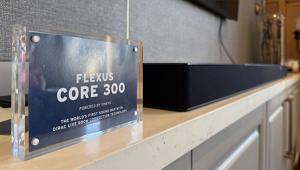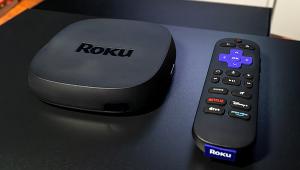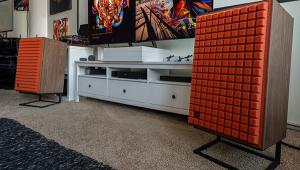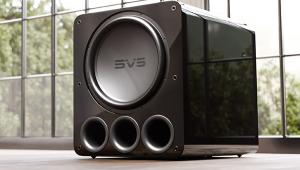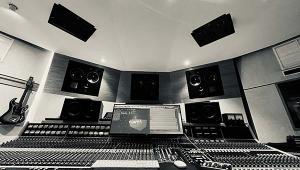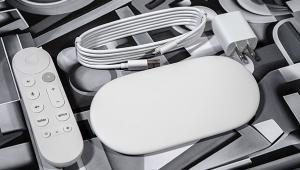Samsung BD-P1500 Blu-ray Player Setup & Tests
Within the Setup menu, there are seven options: System, Language, Audio, Display, HDMI, Network, and Parental. In System, you set your time zone and clock, and you can check for any firmware updates. To update the BD-P1500's firmware via Ethernet, you'll need to configure the player for your network in this menu.
In the Audio menu, you can select PCM, Bitstream (re-encode), or Bitstream (audiophile) to specify the digital-audio output format. The PCM setting decodes whatever audio format you select on the disc and sends it as PCM over HDMI to the AVR or pre/pro. This setting also decodes the so-called secondary audio elements, such as PIP commentaries and menu sounds, and mixes them with the primary soundtrack.

In this setting, the player decodes Dolby TrueHD in its entirety, but if you select a DTS-HD MA soundtrack on the disc, the player only decodes the core data—that is, conventional DTS—so you lose the benefit of lossless Master Audio. The PCM setting otherwise presents the highest-quality digital audio with all elements mixed together.
The Bitstream (re-encode) setting does much the same thing as PCM—decode and mix the primary and secondary audio tracks as described above—but it then re-encodes the whole kit and caboodle to high-bitrate but conventional DTS. The only reason to select this setting is if your AVR or pre/pro can't accept PCM.
Finally, there's Bitstream (audiophile), which sends the selected soundtrack, be it Dolby TrueHD, DTS-HD MA, or whatever, as a native bitstream to the AVR or pre/pro for decoding in that device. This usually results in slightly better audio quality—which I'll discuss shortly—but the player ignores any secondary audio elements (PIP commentaries, menu sounds, etc.), so you won't hear these elements in this setting.
In the Display menu, you will find a setting called Movie Frame (24fps). Just set it to On if your display supports playback at 24fps. This menu is also where you set the output resolution.
Using the HQV Benchmark Blu-ray disc, I tested the BD-P1500's internal video processor. These tests are important to demonstrate the player's ability to deinterlace data on discs that store the content as 1080i. While the majority of commercial Blu-ray discs store the data as 1080p/24, there are some movies and concert videos that store it as 1080i.
There are two tests for jaggies on the HQV disc. Technically, the BD-P1500 passed these tests, based on the disc's pass/fail criteria. However, I thought the performance of the BD-P1500 was less than ideal compared to the same tests played on the Sony PlayStation 3. It's important to understand that the PS3 does not deinterlace 1080i content; instead, it merely passes whatever is on the disc to the display—in this case, my JVC DLA-HD1—which does the deinterlacing. Thus, the comparisons I make here are between the processors in the BD-P1500 and the DLA-HD1.
On the rotating-bar test, the Samsung demonstrated visible jaggies at 20 degrees, whereas the JVC didn't start to show jaggies until 10 degrees. The shallower the angle at which jaggies become visible, the better the interpolation of the processor.
In the test with three bars moving up and down inside a circle, there were noticeable jaggies in the lowest bar on the Samsung. The JVC also exhibited some jaggies on this third bar, but it was almost imperceptible until I walked up to the screen.
The video resolution-loss test showed some serious flickering in the high-frequency vertical burst when testing the Samsung. On the JVC, all the vertical and horizontal bursts were rock solid. But the projector did show signs of vulnerability with the film resolution-loss test. Unfortunately, the Samsung didn't fare any better, showing the same flickering as in the video test. Moreover, there was a color cast in the low-frequency horizontal burst—pink as the test pattern moved to the left and cyan as it moved to the right. In the camera pan across an empty football stadium, the Samsung lost more resolution than the JVC.
The projector tested better than the Samsung in most of these benchmark tests. However, it's important to remember that the data on most commercial discs is stored as 1080p, so the importance of deinterlacing from 1080i to 1080p may be minimal.
- Log in or register to post comments

